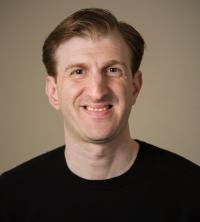Adam S. Yasgar
Staff Scientist
Division of Preclinical Innovation
Early Translation Branch
Contact Info

Biography
Adam Yasgar is a staff scientist in the Early Translation Branch within NCATS’ Division of Preclinical Innovation, where he works as part of a collaborative team in which colleagues with diverse specializations in biology, informatics and medicinal chemistry characterize and optimize probes. He and his colleagues partner extensively with other NIH institutes, academia, small biotechnology companies, patient advocacy groups, pharmaceutical companies and government researchers to identify probe molecules. These molecules are identified through target- and phenotypic-based high-throughput screening (HTS) assays, representing a diverse target and therapeutic portfolio. Yasgar and his colleagues use state-of-the-art laboratories located in Rockville, Maryland, that currently host more than 300 scientists and engineers.
Yasgar has built an impressive portfolio, working on more than 40 HTS campaigns leading to more than 50 publications (view his National Library of Medicine bibliography) and 15 probe molecules. Mentoring young scientists and trainees is one of his passions, and he dedicates time to training NIH post-baccalaureate, postdoctoral and Oxford-Cambridge Scholars Program students in all aspects of early drug discovery methods and probe development. Yasgar’s other achievements at NCATS include leading the Summer Internship Training Program, playing an integral role on the team that created the NCATS Pharmaceutical Collection, and leading a group of scientists in identifying an inhibitor of the Zika virus during the 2016 public health emergency.
Prior to joining NCATS in 2011, Yasgar served as an assay biologist at the newly formed NIH Chemical Genomics Center (NCGC) at the National Human Genome Research Institute. Initially serving on a small 10-person staff, Yasgar helped build a multidisciplinary team of automation and compound management experts at NCGC. Later, he joined the biology team (led by Anton M. Simeonov, Ph.D.) as a staff scientist, where he primarily focused on the miniaturization of biochemical and cell-based assays for HTS campaigns to develop small-molecule probes. In 2011, NIH established NCATS, with NCGC forming the core of the new center’s research and screening efforts.
Yasgar earned his Bachelor of Science in chemistry at the George Washington University in 2001. As an undergraduate, he discovered his scientific passion for analytical chemistry through his work using high-performance liquid chromatography/mass spectrometry to separate and identify illegal components in dietary supplements for the U.S. Food and Drug Administration. This experience earned him his first position at Pfizer’s Groton, Connecticut, research facility, working in the Pharmacokinetics, Dynamics and Metabolism preclinical group as a research associate, where he further developed his bioanalytical techniques. At Pfizer, Yasgar was part of a team of specialists in the central nervous system (CNS) therapeutic area, where he was fortunate enough to support project teams that led to two approved drugs, asenapine (Saphris) and varenicline (Chantix).
Research Topics
Yasgar’s research interests include bioanalytical analysis and HTS assays to support ADMET (absorption, distribution, metabolism and excretion — toxicity). He is particularly interested in HTS campaigns involving the CNS therapeutic area and in the difficulty of finding small molecules that can cross the blood–brain barrier. In addition, Yasgar is interested in helping the public better understand comparative medicine and dietary supplements by using the HTS platform to interrogate the efficacy and value of these unregulated substances. He enjoys working in the collaborative research environment at NCATS and forming productive and long-lasting collaborations with researchers from academia, small biotechnology companies, patient advocacy groups, pharmaceutical companies and government.
Selected Publications
-
Therapeutic Candidates for the Zika Virus Identified by a High-Throughput Screen for Zika Protease Inhibitors
-
Discovery of Orally Bioavailable, Quinoline-Based Aldehyde Dehydrogenase 1A1 (ALDH1A1) Inhibitors with Potent Cellular Activity
-
Current Approaches for the Discovery of Drugs That Deter Substance and Drug Abuse
-
The NCGC Pharmaceutical Collection: A Comprehensive Resource of Clinically Approved Drugs Enabling Repurposing and Chemical Genomics
-
Quantitative High-Throughput Screening: A Titration-Based Approach That Efficiently Identifies Biological Activities in Large Chemical Libraries


